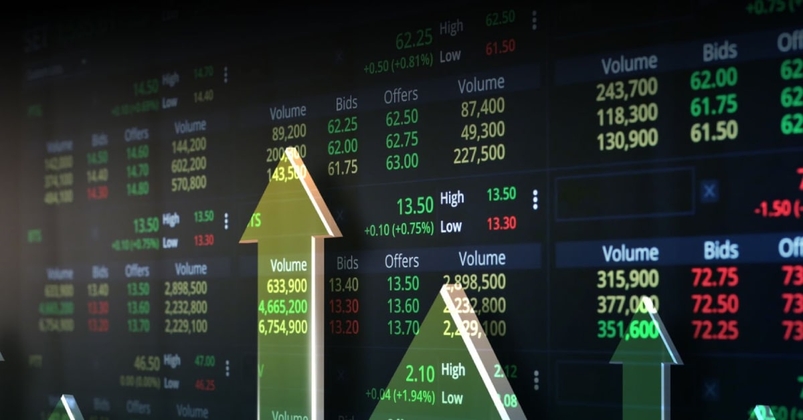CFDs are complex instruments and come with a high risk of losing money rapidly due to leverage. 72.2% of retail investor accounts lose money when trading CFDs with this provider. You should consider whether you understand how CFDs work and whether you can afford to take the high risk of losing your money.
- English
- Italiano
- Español
- Français
An In-Depth Overview of US30 in Trading
What is the US30?
US30 refers to the Dow Jones Industrial Average (DJIA), one of the oldest and most-watched indices in the world. It comprises 30 large, publicly-traded companies in the US, and it serves as a meaningful indicator of the overall health of the US economy. Traders often use US30 as a barometer for market sentiment and direction. Its volatility offers ample trading opportunities, but also presents increased risk.
Examples of Risks:
- Market Fluctuations: The Dow Jones is susceptible to swings based on various factors like economic data releases, interest rate changes, geopolitical events, and company-specific news. These fluctuations can lead to unexpected losses if positions are not carefully managed.
- Price-Weighted Methodology: The Dow Jones uses a price-weighted system, meaning companies with higher stock prices have a greater influence on the index. This can skew the overall picture and magnify the impact of volatile stocks, increasing trading risks.
- Trading Leverage: While volatility offers opportunities, it also amplifies the impact of leverage, a common practice in trading. Using excessive leverage can magnify losses significantly, turning small setbacks into major financial blows.
By understanding these inherent risks and employing sound risk management strategies, traders can approach US30 with greater awareness and potentially navigate its market movements more effectively.
How is the US30 calculated?
Unlike other major indices that are weighted based on market capitalisation, the US30 follows a price-weighted methodology. This means that the price of each constituent stock influences the index's value, rather than the market capitalisation of the companies. To calculate the US30, the sum of the prices of all 30 stocks is divided by a divisor that adjusts for stock splits, dividends, and other corporate actions.
Imagine we have a hypothetical mini-US30 with only 3 stocks:
Stock A: Price = $100, Shares Outstanding = 1 million
Stock B: Price = $200, Shares Outstanding = 2 million
Stock C: Price = $300, Shares Outstanding = 3 million
In a price-weighted index, each stock's influence is based solely on its price, not its market capitalization (price x shares outstanding). Therefore:
Stock A's weight = $100 (price)
Stock B's weight = $200 (price)
Stock C's weight = $300 (price)
To calculate the mini-US30 index:
Sum the prices of all stocks: $100 + $200 + $300 = $600
Divide the sum by the number of stocks (divisor): $600 (sum) / 3 (stocks) = $200 (index value)

Dow Jones Industrial Average: A Price-Weighted Index
The US30's price-weighted nature sets it apart from other major indices, such as the S&P 500 and the NASDAQ Composite. This unique characteristic means that higher-priced stocks have a more significant impact on the index's value. As a result, companies with higher stock prices, even if they have a smaller market capitalisation, can have a substantial influence on the US30. Traders need to be aware of this when analysing the index and making trading decisions. This is usually a setback for those looking for a proper gauge of the US market and using the US30 is not ideal compared to other indices that are more comprehensive.
US30 in a Bear Market: What to Expect
During bear markets, when stock prices are declining, the US30 can provide valuable insights into the market's direction. As a price-weighted index, the US30 may be more susceptible to the impact of declining stocks with higher prices. Traders should be cautious during bear markets and consider other indicators and technical analysis tools to confirm the US30's potential opportunities. It is also crucial to practise risk management and employ proper risk-reward ratios when trading during bearish periods.
How Reliable of an Indicator is the US30?
As a trader, it is important to assess the reliability of indices as market indicators before incorporating them into your trading strategy. The US30 has earned its reputation as a reliable one due to its historical performance and its ability to reflect market sentiment, to a certain extent. The index's long history and extensive coverage of various sectors provide a fairly broad view of the US stock market's overall health.
Strengths of the US30:
- Market Barometer: Encompassing 30 prominent US companies across diverse sectors, the US30 acts as a barometer for the overall health of the American economy. It reflects the performance of leading players like Apple, Microsoft, and Boeing, offering a holistic view.
- Historical Track Record: With a rich history dating back to 1896, the US30 provides a vast dataset for analysis. This allows traders to back-test strategies and gain insights into its historical behaviour under various economic conditions.
- Sentiment Gauge: Beyond individual companies, the US30 reflects investor sentiment towards the US economy. A rising index often signals confidence, potentially boosting other markets. Conversely, a decline might indicate cautiousness, impacting trading across currencies.
- Liquidity and Accessibility: Traded widely and continuously, the US30 offers high liquidity, making it easy for traders to enter and exit positions. Its accessibility through various platforms further enhances its appeal.
Limitations of the US30:
Limited Scope: Although diverse, the US30 only reflects a fraction of the entire US stock market. It might not capture nuances present in smaller companies or specific sectors.
Economic Dependence: The US30 is heavily influenced by economic factors like interest rates, inflation, and government policies. While valuable, it's crucial to consider broader economic influences.
Technical Limitations: Like any indicator, the US30 is not a magic bullet. Relying solely on it can be risky. Combining it with other technical and fundamental analysis is crucial for informed decisions.
Conclusion
In today's fast-paced financial markets, adapting to changing market conditions is key when trading. The US30 can help traders stay ahead by providing real-time information about the overall market sentiment. By analysing the index's performance and comparing it to other major indices, traders can gain insights into the strength of the US economy and make informed trading decisions.
The material provided here has not been prepared in accordance with legal requirements designed to promote the independence of investment research and as such is considered to be a marketing communication. Whilst it is not subject to any prohibition on dealing ahead of the dissemination of investment research we will not seek to take any advantage before providing it to our clients.
Pepperstone doesn’t represent that the material provided here is accurate, current or complete, and therefore shouldn’t be relied upon as such. The information, whether from a third party or not, isn’t to be considered as a recommendation; or an offer to buy or sell; or the solicitation of an offer to buy or sell any security, financial product or instrument; or to participate in any particular trading strategy. It does not take into account readers’ financial situation or investment objectives. We advise any readers of this content to seek their own advice. Without the approval of Pepperstone, reproduction or redistribution of this information isn’t permitted.
